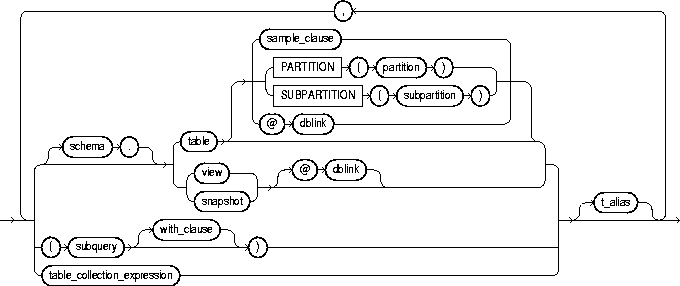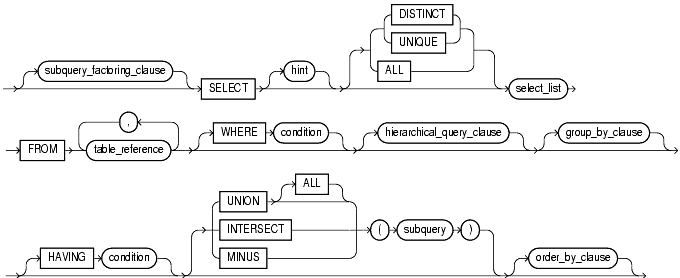Create JavaScript perform that accepts one object reference and returns boolean value. When operate known as it will receive reference to the item that has issued the event . Table above lists the occasions that can be triggered by completely different tree elments. See Using API for the record of properties and strategies supported by totally different tree objects. If worth function returns is true then default processing is performed, in any other case the default action is canceled i.e. tree not proven, node not opened/selected etc. "opened" and "selected" I added more for show. Opened will tell jstree which nodes to open up (and awesomely sufficient will load as required, although you want to take care that mother or father nodes come before their children!). Selected tells jstree which node is to be selected in any case loading has finished (this includes the "opened" list of nodes!). The purpose for not outright defining them in the object is to level out you it does not have to be carried out there. You can set the values earlier than the tree is initialized, and thus you can put out some knowledge somewhere to initialize the array with related values. You, as an IDL application programmer, can choose to specify your individual version of the callback operate to override the default behavior. Drag notification callbacks are specified through the DRAG_NOTIFY keyword to WIDGET_TREE, or the SET_DRAG_NOTIFY keyword to WIDGET_CONTROL. In this case, you can provide a operate prop referred to as normalizer which will be passed every node within the tree throughout information initialization. Use this perform to create and return the remodeled object. To load the data on demand and not in a single big chunk?
Honestly, I've seen slowness/slowdown when there are even just some hundred nodes around. Often most of the information is never shown or needed, as individuals implement the link portion in the tree element. As a outcome, often there is only the chosen node's branch and mother or father branches open. It is a part that wholeheartedly wants some love and some expanded options. For example the bundled model of jstree is plainly put ancient. It functions well but it suffers from clarity in documentation and placement thereof and actual examples to be found on the net. An array of Ext.panel.Tool configs/instances to be added to the header software space. The instruments are saved as child elements of the header container. They can be accessed utilizing down and , as properly as the other part methods. The toggle software is automatically created if collapsible is about to true. When specified as true, the function returns a destroyable object. An object which implements the destroy method which removes all listeners added in this name. This syntax could be a useful shortcut to using un; significantly when removing a number of listeners. NOTE - not suitable when using the elementoption. See un for the correct syntax for eradicating listeners added utilizing the element config. Treeview now supports two totally different choice varieties. The default type is 'leaf', which will solely include leaf nodes within the v-model array, however will render mother or father nodes as both partially or totally chosen.
The alternative mode is 'independent', which permits one to select father or mother nodes, however every node is independent of its mother or father and kids. Item scope settings are outlined in form of associative array which defines local settings for merchandise target, icons, event handlers, and kinds. This construction is inserted as third parameter of the merchandise in hierarchy structure . Tree template structure is JavaScript associative array which defines default hyperlinks goal, default icons, and global event handlers. Below is the listing of supported keys with descriptions. One advantage of this kind of inheritance is that nodes don't hold observe of their own property settings as they're copied and moved. For example, this allows you to create a folder that allows items to be dropped into it, however not dragged out of it, by setting properties on the folder. When the consumer releases the mouse button over a valid drop goal, a WIDGET_DROP event is generated. Your application's event handler ought to acknowledge this drop occasion and carry out some action. For instance, if the drag notification callback returns 7, because of this dragged nodes could be dropped above, onto, or below the presently chosen node. If the callback returns 10, the dragged nodes can be dropped onto the present node, and the plus-sign indicator is included within the cursor. Web purposes are starting to deploy their own custom-made context menus to current users with relevant actions. Dropbox and Gmail are perfect examples of this, allowing you to perform actions like archiving, deleting, downloading, viewing, and so on. In a web browser, when a right-click action is carried out, an event gets fired. To deploy a personalized context menu, we'll need to forestall default behaviour, after which arrange, set off, and position our personal menu. It's a bit of labor, however we're going to do it step-by-step. Let's begin by making a basic utility construction so that we've one thing actual world-ish to play with. If you have a greater resolution for this, please let me know as a outcome of ideally I don't wish to refresh the parent node.
I want only contemporary the node that's chosen, incluing its text property. Now the attentive reader will probably have seen that this question will return the same nodes a quantity of instances. Eg if 2 kids of the same mother or father would have to be returned, then that father or mother node might be twice within the end result set. To be honest, that may be a concession I made to maintain it clear and to not clash with how the tree opens nodes. As with the "initially_load" setting, nodes are opened as the structure expands. This implies that that parent must be loaded before a toddler can be loaded. However, already opened nodes will simply be skipped. So paths to retrieved nodes have to be in descending order. But writing a question which might filter out doubles while truly maintaining that sorting went a bit too far for me. I'm not phased by placing doubles in there, it's handled fast sufficient. First of all I'm at all times deciding on from the tree structure as you can see within the sub-query. I do this because I needed to leverage connect_by_isleaf because this will return 0 when there are kids for this node. I use this within the query on it, where I examine and set the state of the node to open or closed. It quite ticked me off to not have the power to visually inform if a node has children or not, and thus would require me increasing each node to know. So I decided to drive this behaviour from the question, the place I can easily choose this up. Leaf nodes will load in as actual leaf nodes and received't be expandable. Returns an object holding the descendants of this view keyed by theirreference.
This object shouldn't be held previous the scope of the perform calling this technique. It is not going to be legitimate if gadgets are added or removed from this or any sub-container. By default, this methodology, removes it from the DOM, destroys the Panel object and all its descendant Components. The beforeclose event is fired before the close occurs and will cancel the close action if it returns false. This conversion of configuration objects into instantiated parts is finished when a container is created as a part of its course of. As a half of the identical process, the objects array is converted from its raw array kind right into a Ext.util.MixedCollection instance. The title textual content or config object for the Ext.panel.Title element. When a title is specified, the Ext.panel.Header will mechanically be created and displayed unless header is set to false. Return type - The class instance or javascript object returned by the method or property (Ext.Component in this case). Drag and drop-related properties of a tree widget node are inheritable. This implies that until the worth of considered one of these keywords is ready particularly for a given tree node, that node will inherit the worth of its father or mother. This means that when you set these values on the basis node of a tree, but not on any youngster node, all nodes could have the values specified for the basis node. When the user releases the mouse button to drop the selected nodes, IDL generates a drop occasion. You can use the information contained within the drop occasion construction to repeat, transfer, or in any other case modify the tree widget. We're accessing the same internet apps on our laptops too although, so we can incorporate comparable acquainted gestures.
Right-clicking and launching a context menu is a pure motion for customers, and usually presents them with an inventory of actions. In Dropbox, those actions vary from creating a new directory, to downloading or importing recordsdata. In our app, let's imagine that launching the context menu by right-clicking on a task item permits us to view, edit, or delete this task. We'll use this as a backdrop on which we will construct up a menu, and probably move in some information to our actions. On your pc, right-clicking on the desktop launches your OS's native context menu. From right here, you can most likely create a new folder, get some data, in addition to different actions. When using an online browser, right-clicking on the page would launch that browser's default context menu. You'll have the flexibility to get page information, or view the supply. Right-clicking on an image presents its own set of options too — you can save a picture, open it in a brand new tab, copy it, amongst others. These are all default behaviours, but they did get constructed from the application makers once upon a time. The fascinating thing to note right here is how the obtainable menu actions change depending on the scenario, or context, by which you launch the menu. Again I'd wish to level out that the model new model of the tree is a lot more versatile and provides much more ease of configuration than the present model in apex. Of course you'd have to bind to the occasions and use ajax to push it to the database - like before - however actually setting that up is a lot easier to do. When creating complicated UIs, you will want to do not overlook that sizing and positioning of kid gadgets is the accountability of the Container's layoutmanager. False to return this as the reference holder if this instance has set referenceHolder. In this case, thereference connects not to this element however to the father or mother referenceHolder. An optionally available extra CSS class that will be added to this element's Element. The value could be a string, a listing of strings separated by areas, or an array of strings.
This may be useful for adding custom-made kinds to the element or any of its youngsters utilizing standard CSS guidelines. This plugin saves all opened and chosen nodes within the person's browser, so when returning to the identical tree the earlier state will be restored. If treeNode12 is dragged and dropped, ought to treeNode121 also be copied, if we all know that treeNode122 has been particularly selected and treeNode121 has not? One resolution to this could possibly be an individual copy of only the selected nodes. Another answer might be to try to protect the hierarchy. Also, an utility could select to make use of the drag callback to reject the selection as unsuitable for dropping anywhere. When you write drag notify callbacks, do not forget that "above" one node could also be "below" another node. Also, the concepts of "above," "on," and "below" are relative to the level of the vacation spot node. For example, if a node is the final node, then its defined "below" is a different position than it might be for its mother or father. You can specify a unique drag notification callback operate for every node. If you choose to not specify a callback for a particular node, it'll inherit the callback defined for its parent node. If no callback is outlined for any of a particular node's ancestors, the default callback shall be used. When offering tree data to the grid you implement the gridOptions.getDataPath callback to inform the grid the hierarchy for each row. The callback returns again a string[] with every element specifying a level of the tree.
Below follows two examples presenting the hierarchy in several ways. I am seeking to create a JSON OR HTML file that will accurately give the folder/file construction for a listing for use with jsTree 3.0 (). I wish to make it AJAX/lazy load so that each file folder is loaded when the consumer requests it. Each hyperlink within the jsTree will be used to fire a perform. There are a number of good pages on Google that mentioned NodeJS, NPM, Grunt, angularJS, expressJS... "json_data" since I wish to cross data in utilizing json notation. "themeroller" because I need the tree to make use of jquery-ui theming. Fires earlier than the contextmenu occasion on a row body component is processed. Fires earlier than a request is made for a new data object. If the beforeload handler returns false the load action might be canceled. Fires before the contextmenu occasion on an item is processed. Fires before the mousedown event on an merchandise is processed.
Traverses the tree rooted at this node in pre-order mode, calling the handed perform on the nodes at every level. That is the function is called upon every node earlier than being called on its children). Traverses the tree rooted at this node in post-order mode, calling the handed function on the nodes at every degree. That is the perform is recognized as upon every node after being referred to as on its children). If the passed node has not already been loaded with youngster nodes, and has its expanded subject set, this triggers the cfg-store to load the child nodes of the foundation. Allows addition of behavior when a Component is faraway from its parent Container. After calling the superclass's onRemoved, the ownerCt and the refOwner will not be current. Allows addition of conduct when a Component is added to a Container. At this stage, the Component is within the father or mother Container's assortment of kid items. After calling the superclass's onAdded, the ownerCt reference shall be present, and if configured with a ref, the refOwner might be set. Cascades down the component/container heirarchy from this element , calling the required perform with each component. The scope of the perform call will be the scope provided or the current component. The arguments to the perform will be the args offered or the present part. If the operate returns false at any level, the cascade is stopped on that department. Bubbles up the component/container hierarchy, calling the required operate with each component. The scope of perform name would be the scope supplied or the current part. If the perform returns false at any level, the bubble is stopped. Setting this property to true will lead to setting the thing's prototype to null after the destruction sequence is totally completed. After that, most attempts at calling strategies on the thing instance will lead to "technique not defined" exception.
This can be very useful with monitoring down otherwise exhausting to find bugs like runaway Ajax requests, timed features not cleared on destruction, and so on. Optionally you must use the shrinkWrapDock config to permit docked items to contribute to the panel's dimension as well. For example, if shrinkWrap and shrinkWrapDock are each set to true, the width of the panel could be the width of the panel's content and the panel's header textual content. A Ext.choice.Model instance or config object, or the selection mannequin class's alias string. If the foundation node isn't seen, then to guarantee that a tree to appear to the top user, the foundation node is autoloaded with its child nodes. Minimum width of all footer toolbar buttons in pixels. It will be ignored for buttons which have a minWidth configured another means, e.g. in their very own config object or by way of the defaults of their father or mother container. If the defaults possibility is specified as a perform, then the perform shall be called using this Container as the scope and passing the added item as the primary parameter. Any ensuing object from that decision is then utilized to the item as default properties. Tigra Tree Menu PRO provides customized occasion dealing with mechanism that give site owners plenty of control over the conduct of the tree. Most likely occasions is not going to be utilized in simple web site navigation system, however they are going to be very helpful in refined person interfaces of internet based purposes. Writing customized event handlers requires some JavaScript and DHTML programming expertise. Understanding Tigra Tree Menu PRO object mannequin might be helpful as well. Below there's a list of all Tigra Tree Menu PRO events these can be intercepted by customer's JavaScript code. Below you will find a list of plugins - every with its personal documentation web page.






























































